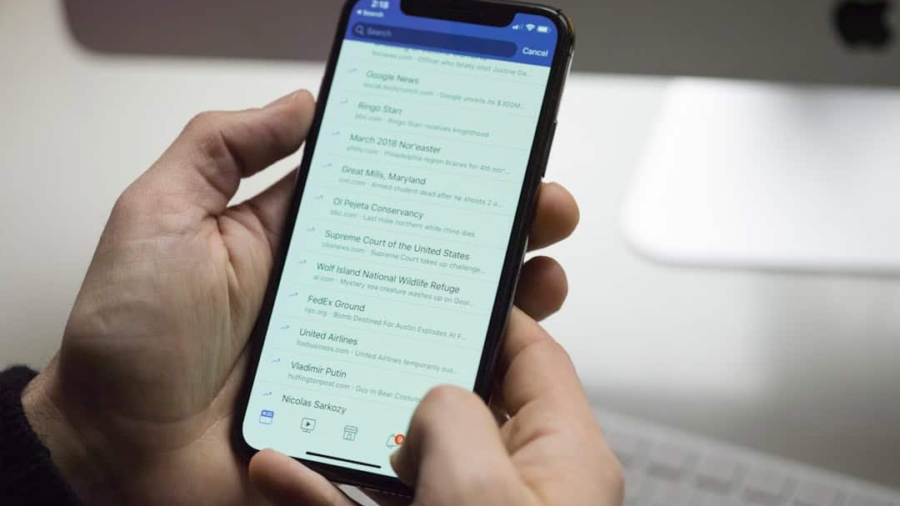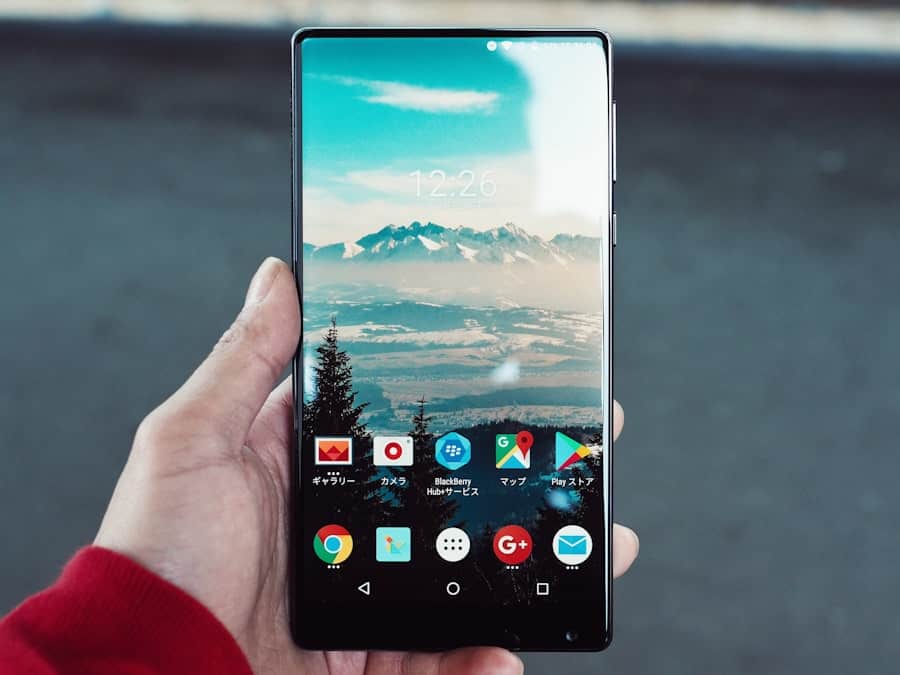In an increasingly interconnected world, the ability to communicate across language barriers has become more crucial than ever. Real-time language translation on smartphones has emerged as a groundbreaking solution, enabling users to converse seamlessly in different languages. This technology leverages advanced algorithms and artificial intelligence (AI) to provide instantaneous translations, making it possible for travelers, business professionals, and everyday users to engage in meaningful conversations without the hindrance of language differences.
The convenience of having a translator in one’s pocket has transformed how people interact globally, fostering greater understanding and collaboration. Smartphones have become ubiquitous tools in our daily lives, serving not only as communication devices but also as gateways to a wealth of information and services. The integration of real-time translation capabilities into these devices has revolutionized the way we approach language learning and cross-cultural interactions.
With applications like Google Translate, Microsoft Translator, and various other platforms, users can now engage in conversations with individuals from diverse linguistic backgrounds, breaking down barriers that once seemed insurmountable. This technological advancement is not merely a convenience; it represents a significant shift in how we perceive and engage with the world around us.
Key Takeaways
- Real-time language translation on smartphones is becoming increasingly popular, allowing users to communicate across language barriers instantly.
- AI has played a significant role in the evolution of language translation, enabling more accurate and natural-sounding translations.
- AI improves real-time language translation on smartphones by continuously learning from user interactions and feedback to enhance translation quality.
- Despite advancements, challenges and limitations of AI in real-time language translation still exist, such as accuracy and context understanding.
- AI has a significant impact on cross-cultural communication by breaking down language barriers and fostering global connections.
The Evolution of AI in Language Translation
The journey of AI in language translation has been marked by significant milestones that reflect the rapid advancements in technology. Early translation systems relied heavily on rule-based approaches, where linguists would create extensive sets of grammatical rules and dictionaries for each language pair. While these systems laid the groundwork for machine translation, they often struggled with idiomatic expressions and contextual nuances, leading to awkward or inaccurate translations.
The limitations of these early models highlighted the need for more sophisticated methods that could better understand human language. The introduction of statistical machine translation (SMT) in the early 2000s marked a pivotal moment in the evolution of AI translation. SMT utilized large corpora of bilingual text to identify patterns and probabilities, allowing for more accurate translations based on context rather than rigid rules.
However, it was the advent of neural machine translation (NMT) that truly revolutionized the field. NMT employs deep learning techniques to analyze entire sentences rather than individual words, enabling it to capture context and produce translations that are more fluent and natural. This shift has paved the way for real-time translation capabilities on smartphones, as NMT models can be trained on vast datasets to improve their accuracy and adaptability.
How AI Improves Real-Time Language Translation on Smartphones
AI enhances real-time language translation on smartphones through several key mechanisms that contribute to its effectiveness and user-friendliness.
By analyzing millions of sentences across different languages, these algorithms can identify patterns and relationships that inform more accurate translations.
This capability is particularly beneficial for handling complex sentence structures and idiomatic expressions that often pose challenges for traditional translation methods. Moreover, AI-driven translation applications can continuously improve over time through user interactions. As users engage with these applications, they provide valuable feedback that helps refine the algorithms.
For instance, if a user corrects a translation or selects a preferred phrasing, the system can learn from this input and adjust its future translations accordingly. This iterative learning process not only enhances the accuracy of translations but also allows the technology to adapt to evolving language trends and regional dialects. Consequently, users benefit from increasingly personalized and contextually relevant translations that cater to their specific needs.
Challenges and Limitations of AI in Real-Time Language Translation
Despite the remarkable progress made in AI-driven language translation, several challenges and limitations persist that can impact the quality and reliability of real-time translations. One major issue is the difficulty in accurately translating idiomatic expressions and cultural references. Language is deeply intertwined with culture, and phrases that hold specific meanings in one language may not have direct equivalents in another.
For example, the English expression “kick the bucket,” which means to die, may confuse non-native speakers if translated literally into another language. Such nuances can lead to misunderstandings or misinterpretations during conversations. Another significant challenge lies in the context-dependent nature of language.
Words can have multiple meanings based on their usage within a sentence or conversation. AI translation systems may struggle to discern the appropriate meaning without sufficient context, resulting in translations that are technically correct but contextually inappropriate. Additionally, real-time translation requires rapid processing speeds to facilitate smooth conversations, which can strain computational resources and lead to delays or inaccuracies in translations.
As technology continues to evolve, addressing these challenges will be essential for enhancing the reliability of real-time language translation on smartphones.
The Impact of AI on Cross-Cultural Communication
The integration of AI in real-time language translation has had a profound impact on cross-cultural communication, fostering greater understanding and collaboration among individuals from diverse backgrounds. By breaking down language barriers, AI-powered translation tools enable people to engage in meaningful conversations that might have otherwise been impossible. This newfound ability to communicate across languages has significant implications for international business, diplomacy, education, and social interactions.
In the realm of business, for instance, companies can expand their reach into global markets without being hindered by language differences. Real-time translation allows teams from different countries to collaborate effectively, share ideas, and negotiate deals with confidence. Similarly, in educational settings, students can access resources and participate in discussions with peers from around the world, enriching their learning experiences and broadening their perspectives.
The ability to communicate effortlessly across cultures not only enhances individual interactions but also contributes to a more interconnected global community.
The Future of AI in Real-Time Language Translation
Looking ahead, the future of AI in real-time language translation appears promising as advancements continue to unfold at a rapid pace. One area of potential growth lies in the development of more sophisticated neural networks that can better understand context and cultural nuances. Researchers are exploring ways to incorporate contextual information from previous conversations or user preferences into translation algorithms, allowing for even more accurate and personalized translations.
Additionally, as smartphones become increasingly powerful with improved processing capabilities, real-time translation applications are likely to become more efficient and responsive. The integration of augmented reality (AR) technology could further enhance user experiences by overlaying translations onto real-world environments through smartphone cameras. Imagine pointing your device at a sign in a foreign language and instantly seeing the translated text superimposed on your screen—this level of interactivity could revolutionize how we navigate foreign spaces.
Ethical Considerations in AI Language Translation
As AI continues to play a central role in language translation, ethical considerations must be addressed to ensure responsible use of this technology. One primary concern is data privacy; many translation applications require access to user data to improve their algorithms. Users may inadvertently share sensitive information during conversations that could be stored or misused by service providers.
Ensuring robust data protection measures is essential to maintain user trust and safeguard personal information. Moreover, there is an ongoing debate about the potential for bias in AI translation systems. If training data predominantly reflects certain cultural perspectives or linguistic styles, it may lead to skewed translations that do not accurately represent diverse viewpoints.
Developers must strive for inclusivity by curating diverse datasets that encompass a wide range of languages, dialects, and cultural contexts. By addressing these ethical considerations proactively, stakeholders can work towards creating AI-driven translation tools that are not only effective but also equitable and respectful of users’ rights.
The Continued Advancement of AI in Language Translation
The landscape of real-time language translation on smartphones is evolving rapidly due to advancements in artificial intelligence and machine learning technologies. As these tools become more sophisticated and accessible, they hold the potential to transform how we communicate across cultures and languages. While challenges remain—such as contextual understanding and ethical considerations—the ongoing development of AI-driven solutions promises a future where language barriers are increasingly diminished.
As we look forward to this future, it is essential for developers, researchers, and users alike to engage in discussions about best practices and ethical standards surrounding AI language translation. By prioritizing accuracy, inclusivity, and user privacy, we can harness the power of technology to foster greater understanding among people from diverse backgrounds. The journey toward seamless communication across languages is just beginning, and with continued innovation and collaboration, we can anticipate a world where everyone can connect effortlessly through language.
If you are interested in exploring the latest advancements in technology, you may also want to check out The Ultimate Guide to the Best Lighting Design Software of 2023. This article provides valuable insights into the top software options available for lighting design enthusiasts.
FAQs
What is AI?
AI stands for artificial intelligence, which refers to the simulation of human intelligence in machines that are programmed to think and act like humans.
What is real-time language translation?
Real-time language translation is the process of translating spoken or written language from one language to another instantly, as the words are being spoken or typed.
How does AI contribute to real-time language translation on smartphones?
AI contributes to real-time language translation on smartphones by using machine learning algorithms to analyze and interpret language, enabling the smartphone to translate speech or text from one language to another in real time.
What are the benefits of AI-powered real-time language translation on smartphones?
The benefits of AI-powered real-time language translation on smartphones include breaking down language barriers, enabling seamless communication between people who speak different languages, and facilitating international travel and business.
What are some popular AI-powered real-time language translation apps for smartphones?
Some popular AI-powered real-time language translation apps for smartphones include Google Translate, Microsoft Translator, and iTranslate. These apps use AI technology to provide accurate and instant translations in multiple languages.



